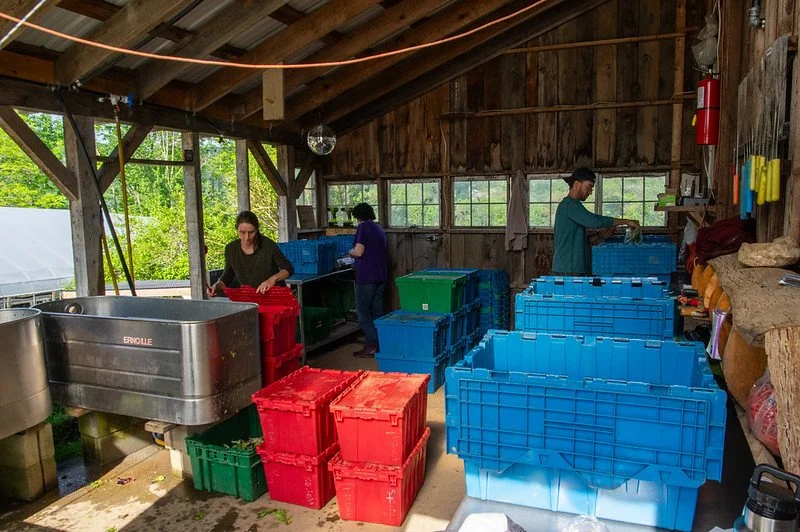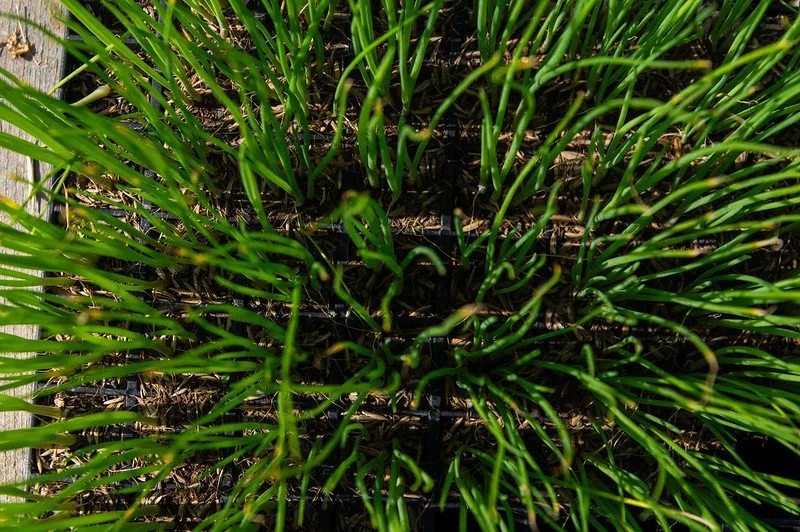4th Week of the Summer CSA season: Week of June 27th
yellow beets, photo by Adam Ford
CSA Balance Due
If you haven’t already paid, your balance is due. You can pay online through your account (with a card or e-check ACH payment), mail a check to Evening Song Farm 48 Nice Road, Cuttingsville VT 05738, leave a check or cash in the CSA cash box at the barn, send money with Venom @eveningsongcsa, or use EBT. It’s very cool to pay in smaller chunks, just let us know what your payment plan is.
tomatoes are still green, photo by Adam Ford
and so are the cherry tomatoes, photo by Adam Ford
This Week’s Availability
This week we will have red radish bunches, salad turnips, fresh yellow beets with greens, fresh carrots with tops, rainbow chard, baby lettuce, green curly kale bunches, lacinato kale bunches, baby bok choi, spinach, rhubarb, winter chioggia beets, fresh oregano bunches, cilantro, scallions, cucumbers, zucchini, broccolini, and strawberries.
Strawberries will still have a limit of 1 pint per share this week, and also, strawberries are a double item, as in 1 pint= 2 CSA items.
This will likely be the last week of strawberries, we hope you enjoyed a little taste of their incomparable sweetness! This year’s harvest was smaller than the year before because of a few factors… 1. We grew fewer rows compared to last year. Harvesting strawberries last June was endless, prevented us from keeping on top of other farm work, and even led to some injuries on our team from repetitive hours spent crouching to harvest. 2. The plants were less vigorous than the year before, likely due to suboptimal establishment in the fall. These strawberry plants are grown from cuttings first rooted in our greenhouse and then transplanted outside. They didn’t root as effectively as previous years, probably because we didn’t remove enough of the large leaves from the cuttings. This fall we’ll have one more year of experience to try to grow the healthiest seedlings for next year’s strawberry plants. It takes us several years of growing a new crop to make enough mistakes to learn how to grow it well with consistency!
Ordering closes at noon on Tuesdays for Wednesday bags, and at midnight on Wednesdays for Friday bags.
You do not need to fill out the form if you plan to come to the barn on Tuesdays, Wednesdays or Thursdays to pick out your items yourself.
garlic scape, photo by Adam Ford
zucchini, photo by Adam Ford
carrot bunches, photo by Adam Ford
Farm News
Last week we had a fun time filling a giant order for the Vermont Farmers’ Food Center, and all the programs they oversee. We sent out almost $3,000 in wholesale veggies just in one load to them, which is impressive to see how they have cultivated many community partners to augment their local food to institutional sales significantly over the past several years thanks to dedicated volunteers and hard working staff. The VFFC manages many community projects, and the largest part of thier purchasing from us last week was for their Farmacy program which provides free, fresh, local food to folks who have a health issue that would benefit from more fresh food in their diet. They have heard from several particiapnts over the years how this has made a real difference in their lives, and it feels very cool to be a part of it. Last week alone we sent them over 250 pounds of leafy greens, and that doesn’t even include the other veggies that went their way… and I just love imagining 250 pounds of leafy greens making their way onto people’s plates who could really use that nutritional care.
I took a tour of another farm participating in the climate farmer cohort as one of our monthly gatherings throughout the main growing season. I appreciate getting to tour other farms to get ideas from other operations. This particular farm (Honey Field Farm in Norwich) is MUCH bigger than us, and mostly wholesales their food and also does a knock out job of spring bedding plant sales. The most interesting parts of touring other farms is to check out their infrastructure: wash station, packing area, coolers, staff zone, high tunnels, seed starting areas, tools, etc. Obviously there would be big differences in all that between scale and operational differences, but there are also so many related similarities. I always leave a farm tour with ideas for improvements at our own place. And that’s what small farming feels like it’s all about.. idea sharing to keep improving all our operations. We don’t have the infrastructure or staffing capacity for it, but I was drooling over their spring bedding plant operation and truly fantasize about the ability to expand that type of operation here.
The past two weeks I have been using the newsletter to share information about the climate cohort I am participating in, and wrote about the research consolidated by Action Circles about the current public narratives around farms and climate change, and the first new message frame they created to get new narratives about farming as climate work into the world. This week I will cover another new message frame. (The message frame is in bold, the unbolded words are their explanation for that message frame, and the italics are my own thoughts.)
Addressing climate change through food requires us to get back to the roots of farming.
Climate friendly agricultural practices are inspired by the natural world and often, indigenous knowledge.
I am currently reading Braiding Sweetgrass by Robin Wall Kimmerer, and really enjoying learning about indigenous plant knowledge and relating that to our work as farmers and my own understanding and relationship to plants. This is a particular area we still have so much to learn about, and much less to opine about in italics. We also find it helpful to just observe nature and see how plants and ecosystems outside an agricultural system thrive, to use those lessons within food production.
Farmers can help mitigate climate change by returning to farming practices that strive to support natural systems, as opposed to scaling up with more “efficient” technologies.
Many agricultural systems are inherently extractive and damaging to the land and surrounding resources. What we do to grow annual vegetables requires a type of disturbance to the soil that is not found in nature: clearing space to expose bare dirt, planting a particular crop, keeping it weeded, transitioning crops quickly…. This type of management isn’t found in natural ecosystems, like prairies, forests, wetlands, etc. The questions that ecologically minded farms have been asking themselves, is how to we minimize our methods of disturbance to a low level, while maintaining the natural environment in and around our food production spaces. Some ways we explore this question at this farm is with the low-till cover crop mulch methods we have been developing to keep soil covered, or growing food in smaller blocks with grassy swales between to hold soil in place, etc.
It is the structural systems, not individual farmers, that made modern-day conventional farming widespread and often environmentally destructive.
My thoughts that respond to this particular idea would take a year’s worth of newsletters, but I am particularly interested in the rapid expansion of destructive agricultural practices after WWII. (A long but informative read, The War on Bugs, by Will Allen, covers the history of the introduction of chemical pesticides as far back as the 1800s, up to the current day.) Earl Butz, the assistant secretary of agriculture in the 1950s, and then the secretary of agriculture in the early 1970s, is potentially responsible for the biggest expansion of conventional farming practices that dominate today. He ended New Deal- era agricultural policies that were enacted to protect small farmers from agribusiness, and he was best known for saying that farmers had to “get big or get out.” It will take big policy changes to prioritize environmentally sound agricultural practices, and really can’t be done farm by farm, without changing the way our federal agricultural policies are enacted.
The roots of farming follow holistic models with minimal waste.
It’s a much more contemporary way to farm to to have farms specialize into one area of production, such as how we primarily produce veggies. When we started farming, I had hoped we would be able to manage a much more diversified operation for this exact reason… to be able to cycle nutrients with minimal waste. For some years, we did diversify our farm’s production by blending our commercial production (the veggie business) with our homestead hobbies (raising milking goats, laying hens, and pigs.) I loved watching the goats grazing down the cover crops (and returning fertility to the fields through their manure), and then seeing the chickens scratch up the grazed areas with veggie compost thrown in for them to increase their forage, then having pigs “till” it all up, while feeding them whey-soaked surplus veggies, and then seeing that all turned in for a future season of veggie production. We moved away from that system for various reasons, including how we actually felt like we could care for the soil with less disturbance, but we miss having that on-farm fertility from animals. Much of agriculture’s origins relied on the relationships within diversified systems to minimize waste and amplify on-farm inputs.
Have a great week,
-ESF Team: Ryan, Kara, Molly, Cindy, Galen, Katie, K2, Taylor, Vanessa, and Bryan (and Sky and Soraya)
Weekly Recipe
This week, Katie made us a delicious version of this recipe below. The broccolini we are harvesting this week would make an excellent top for the recipe below. Give it a shot with full length broccolini on top!
Katie washing lettuce, photo by Adam Ford
cucumbers, photo by Adam Ford
irrigation lines coming of the header, photo by Adam Ford
lots of bagging, photo by Adam Ford
pea shoot bed, photo by Adam Ford
view into the back of the barn, photo by Adam Ford
peas are still growing, photo by Adam Ford
honey bee hive entrance tucked behind some volunteer raspberry plants… the hives are looking real good this season, with one hive already loaded with a beautiful volume of honey, photo by Adam Ford
future scallions to transplant, photo by Adam Ford
when you farm and have kids home for the summer, you gotta find some projects to occupy them…. we are working on getting a background color on for a mural the kids and I will be painting on the trash shed this summer, photo by Adam Ford
one section of the display cooler, photo by Adam Ford
Vanessa labeling bins, photo by Adam Ford
harvesting greens, photo by Adam Ford
K2 and radishes, photo by Adam Ford
view from the field above the tunnels, photo by Adam Ford
under the bird netting: one nice strawberry, one farmer strawberry, and one unripe strawberry… we collect all the gross ones for me, I cut off the gross parts and make some jam with the parts that are left… can’t waste any of those little treasures, photo by Adam Ford
next round of greens growing,, photo by Adam Ford.
loading lettuce into bags for the spinner photo by Adam Ford
Ryan and K2 harvest radishes, photo by Adam Ford
lettuce and spinach after harvest, photo by Adam Ford
cover crop zone above the tunnels, photo by Adam Ford
my brother finished his table, and then moved it to their spot in the woods… it’s looking lovely and useful in its new space… here is to repurposing old table legs from rotten tables into something new, photo by Adam Ford




























